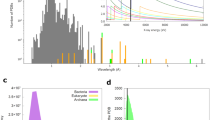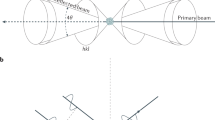Abstract
MERCURIPAPAIN was prepared and crystallized for the first time by Kimmel and Smith1. It contains one atom of mercury for two molecules of papain, but the nature of the mercury-protein complex is not exactly known. Papain is a proteolytic enzyme and has a molecular weight of 20,500 (ref. 2).
This is a preview of subscription content, access via your institution
Access options
Subscribe to this journal
Receive 51 print issues and online access
$199.00 per year
only $3.90 per issue
Buy this article
- Purchase on Springer Link
- Instant access to full article PDF
Prices may be subject to local taxes which are calculated during checkout
Similar content being viewed by others
References
Kimmel, J. R., and Smith, E. L., J. Biol. Chem., 207, 515 (1954).
Smith, E. L., and Kimmel, J. R., Proc. Int. Wool Textile Research Conf. Australia, 1955, C-199.
Smith, E. L., Kimmel, J. R., and Brown, D. M., J. Biol. Chem., 207, 533 (1954).
Author information
Authors and Affiliations
Rights and permissions
About this article
Cite this article
DRENTH, J., JANSONIUS, J. The Unit Cell of Mercuripapain Crystals. Nature 184, 1718–1719 (1959). https://doi.org/10.1038/1841718b0
Issue Date:
DOI: https://doi.org/10.1038/1841718b0
Comments
By submitting a comment you agree to abide by our Terms and Community Guidelines. If you find something abusive or that does not comply with our terms or guidelines please flag it as inappropriate.



